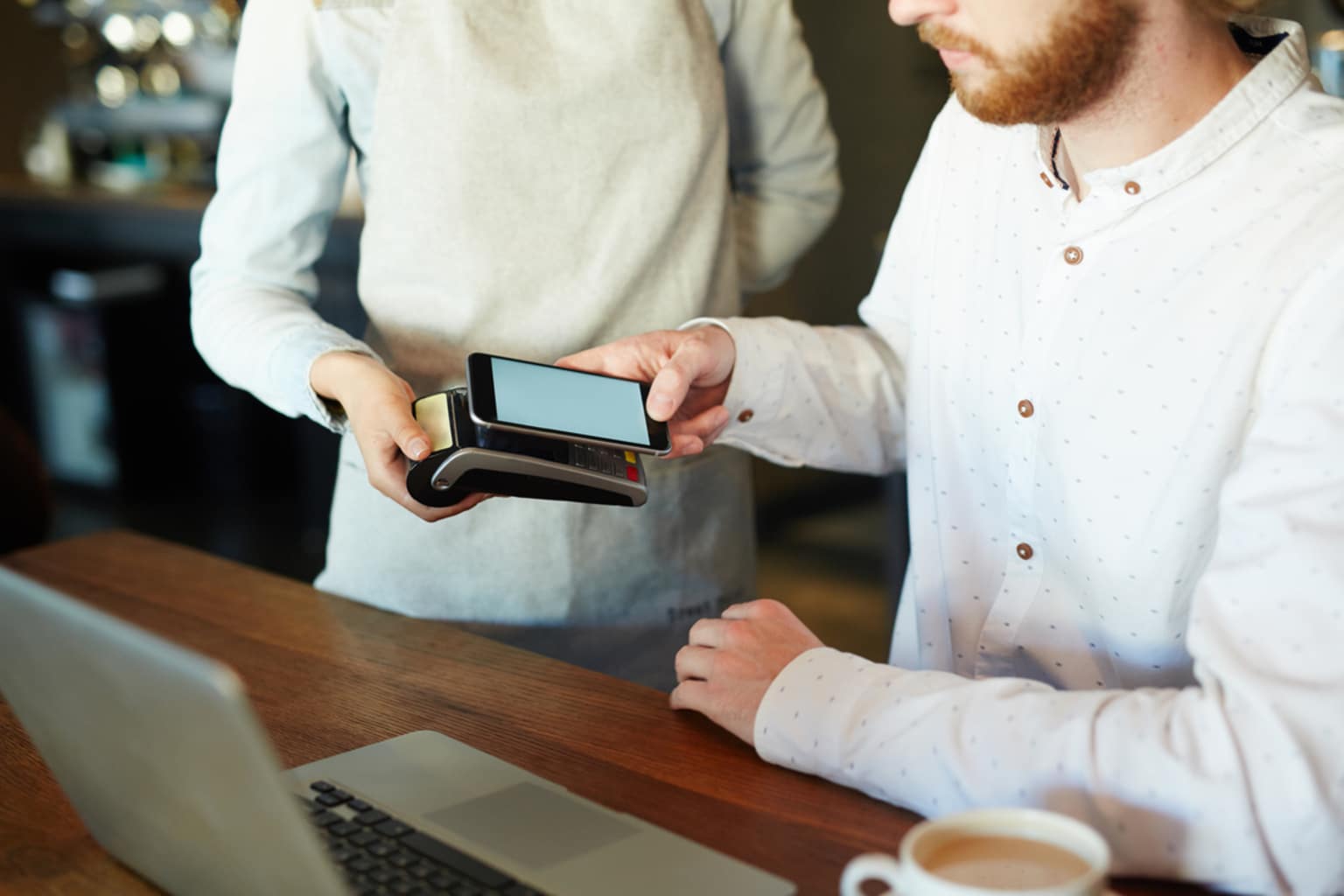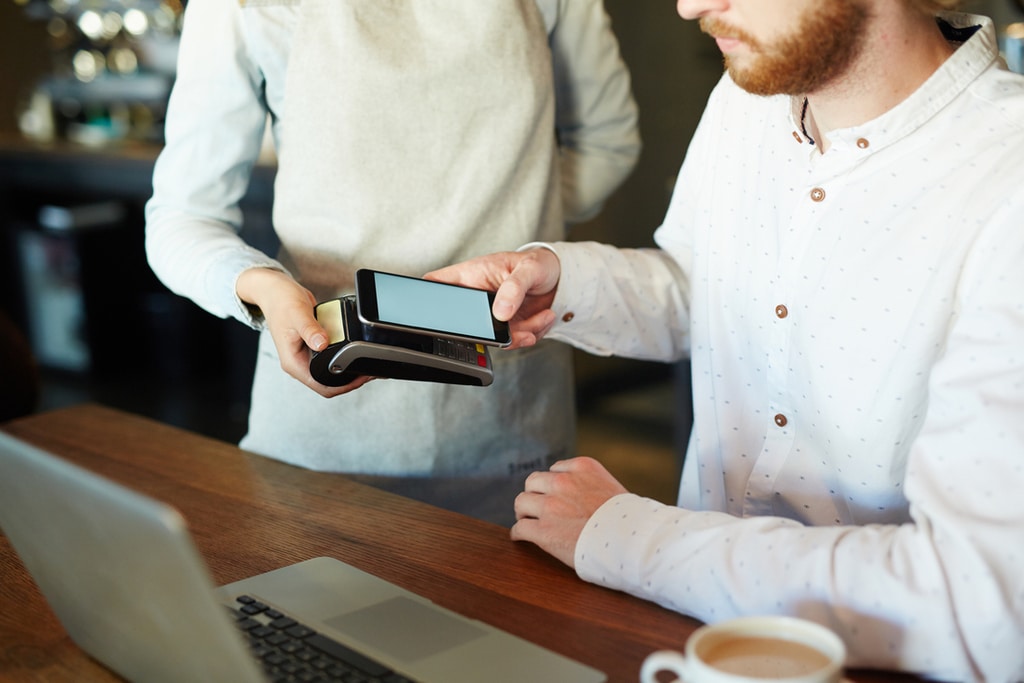
Contactless payment systems launched in 2007, yet they are only recently viewed as serious alternatives to cash or cards in the United States. Since more and more consumers are setting up contactless payment options though, it only makes sense that businesses start adapting them too. Today, one of the biggest trends, contactless payments restaurants.
The concept is simple: Customers simply wave or tap their card or device over a POS system to make a payment. This is done using NFC (near field communication) technology (radio frequency that allows the card to communicate with the restaurant POS device wirelessly) that guarantees fast and precise payments. For most payments, customers can breeze right through without swiping their card or pausing to enter a PIN.
Global consulting firm A.T. Kearney estimates that by 2022, 56% of the cards in the US market will be contactless. That makes it easy for customers to opt for the tap-and-go style of payment. Contactless technology has other advanced ways of paying, such as:
- Smartphones
- Mobile wallets
- Stickers
- Key fobs
- Fitness trackers
These types of payment systems—such as Apple Pay or Google Pay—are designed for fast-paced environments where customers are in a hurry, like food trucks, ice cream shops, or cafes.
There is considerable evidence that shows consumers ages 35 and under prefer contactless payment methods, making it a savvy move for all restaurant types to integrate them. Like with any new tech though, there are sticking points. Below, we review the pros and cons of offering tap-and-go payment systems at your restaurant.
The Benefits of Contactless Payment Systems
Tap-and-go payment systems are touted as the way of the future, yet how reliable are they? Are they secure enough? Do customers even like them? Let’s break down their benefits below and find the answers.
Transactions are Secure and Fraud is Reduced
Since a card or device never leaves the customer’s hand, there is no chance for someone to copy down the numbers. Additionally, the chip technology used in contactless payments is more secure than other forms of payment. These are two points that customers find extremely convincing. As a merchant, one of the advantages of contactless payments is the minimized risk as the payment processing is PCI compliant.
No Hidden Fees for Merchants
Contactless payment systems don’t have additional fees, so businesses that decide to accept them are only required to pay the usual credit card fees.
Consumer Demand
Chances are that your customers have been asking about contactless payments to use their smartphone wallets. The demand is growing, and it’s predicted to grow tremendously since consumers are ready for the benefits of better security and the ease of tap-and-pay. Another study by AT Kearney shows that US consumers view contactless payments as “secure, simple, and fun.”
Better Loyalty Programs
Loyalty programs are a fabulous way to increase repeat business and sales, and there are a few different styles restaurants can choose from. A simple punch card that gets stamped with every purchase is a popular choice. Accruing points through a customer profile or loyalty app are other options.
Now you can have a loyalty program that works with a smartphone’s wallet to automatically keep track of rewards. These programs use the same tech as contact payments, and even let customers pay directly through their wallet for total convenience. So, if customers forget their cards or member numbers, it’s no problem.
That ease will bring more repeat business to your restaurant—it’s a win-win. Companies like punchh specialize in making loyalty programs smartphone wallet-friendly.
Contactless Payments are Faster
Traditional payment methods are fast and give customers a better purchasing experience. PIN numbers or signatures aren’t required, and change doesn’t need to be counted the way it doe for cash transactions. What’s more, receipts can be emailed instead of printed out.
All these improvements might sound small, but if you consider how busy your restaurant gets during rush hour, they save precious minutes over time. You might find that you even need to hire fewer employees. Without the friction of typical payments, tap-and-go methods are saving businesses and customers significant time in the process.
Customers are Happier
What’s more important than customer satisfaction? A positive customer experience is the foundation of every successful restaurant, and things like long waiting lines or broken printers get in the way of full enjoyment.
This study says that not only do customers who pay with wave-and-go systems use them often; that they have more loyalty towards businesses that accept them. Updating your payment systems to include contactless payments is one way of improving the overall customer experience.
Concerns for Accepting Contact Payment Technology
Although the benefits appear to outweigh the concerns for contactless payment systems, there are two disadvantages.
Customer Concern for Security and Fraud
It’s natural to distrust unknown technology, and since the United States just started to offer credit cards with chip technology, it would explain why US consumers are still on the fence. As of 2018, the United States is trailing global leaders when to comes to mobile payments (France has the highest proportion of transactions using non-cash methods, followed by Sweden and Canada). As the owner or manager of a restaurant, you would have to consider how to educate your customers on the security benefits of tap-and-go payments.
There’s an Age Gap
For obvious reasons, millennials have accepted contactless payments; however, older generations remain skeptical. It’s estimated that just 25% of adults older than 35 have started using contactless payments. The attitude is expected to shift though, as the security and anti-fraud benefits become better known.
Overall, you can expect some resistance from customers. Putting aside the doubts, contactless payments are still considered the way of the future. Even Germany, known as a “cash country” for its strong commitment to accepting cash only in many businesses, integrated Apple Pay and Google Pay in 2017. The number of users is small, between 13% and 18% of the total population, but those who do use pay with their smartphone wallets are loyal to establishments that accept them.
If you decide to accept contactless payments at your restaurant, educate your staff and customers on how the data is secured.
Take the right steps to prevent cyber theft before it starts. If your restaurant POS runs on Apple iOS, that’s one step closer to improved security.

